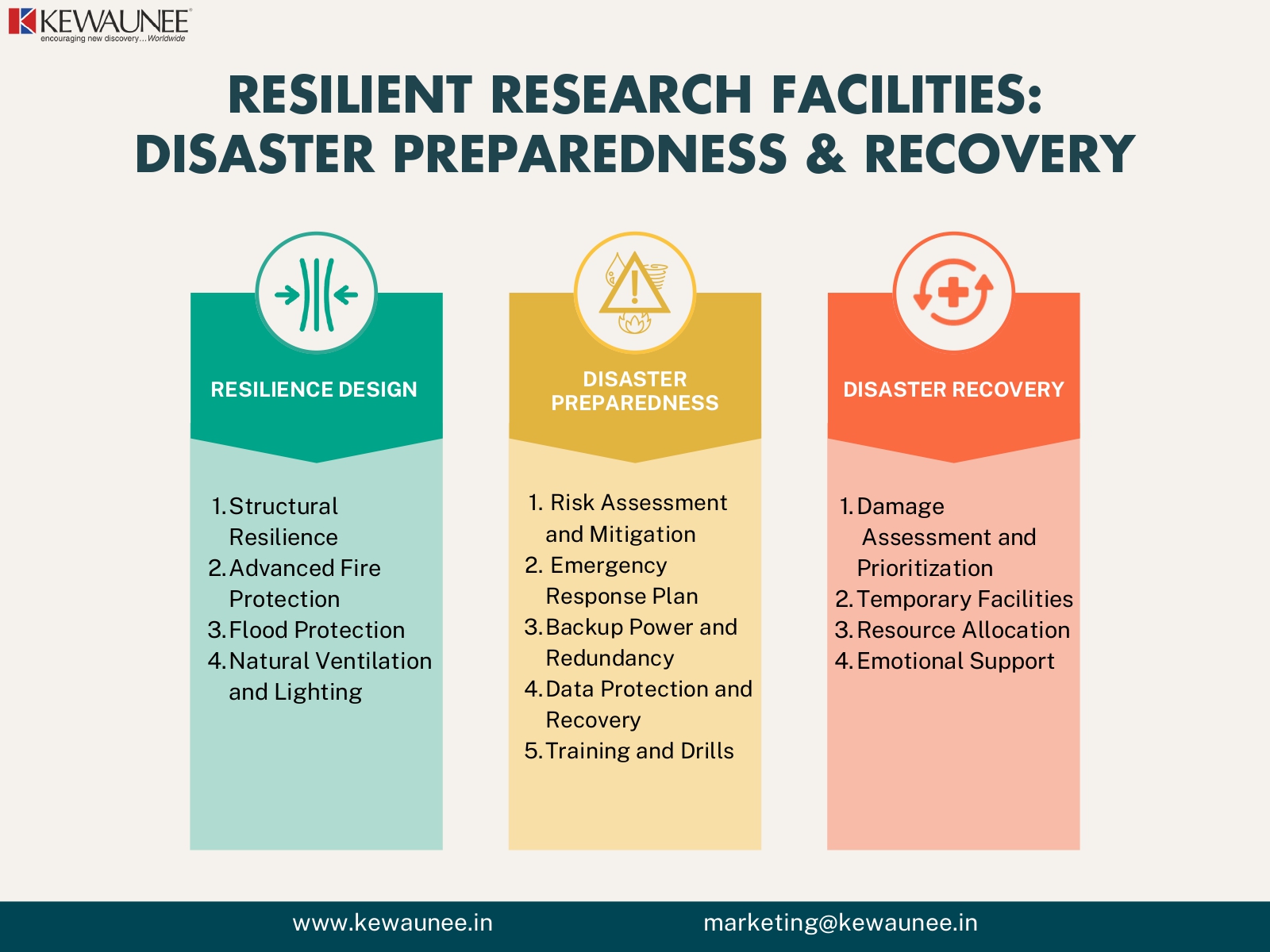Resilient Research Facilities: Disaster Preparedness & Recovery
In the world of scientific research, laboratories and research facilities are the birthplaces of innovation and breakthroughs that drive progress. However, these crucial centers of discovery are not immune to the threat of natural disasters and unforeseen emergencies.
To safeguard valuable research, protect researchers, and ensure continuity, it is imperative for research facilities to be resilient and well-prepared for disasters.
This blog delves into the importance of disaster preparedness and recovery strategies for research facilities, exploring how resilience can be achieved through proactive planning and resourceful measures.
Understanding Disaster Risks for Research Facilities
Research facilities are vulnerable to a wide range of disasters, including fires, floods, earthquakes, hurricanes, power outages, and even cyberattacks.
These events can cause substantial damage to infrastructure, equipment, and research data, potentially setting back years of scientific progress. Hence, recognizing and assessing potential disaster risks is the first step towards building resilience.
Disaster Preparedness: Key Elements
- Risk Assessment and Mitigation: A comprehensive risk assessment identifies potential hazards, evaluates their impact, and enables facility managers to implement appropriate mitigation measures. This may include structural reinforcements, fire-resistant materials, and flood barriers.
- Emergency Response Plan: Developing a well-thought-out emergency response plan is essential for minimizing damage and ensuring the safety of personnel. The plan should outline clear protocols for evacuation, communication, and coordination with emergency services.
- Backup Power and Redundancy: Ensuring access to backup power sources and redundant systems can prevent research interruptions during power outages or grid failures. Backup generators and uninterruptible power supply (UPS) systems are valuable assets in maintaining continuous operations.
- Data Protection and Recovery: Research data is a precious asset that needs safeguarding. Regular backups and offsite storage of critical data can help ensure that research is not lost in the event of hardware failures, cyberattacks, or natural disasters.
- Training and Drills: Conducting regular training sessions and emergency drills for staff familiarizes them with protocols, enabling a swift and coordinated response during real emergencies.
Building Design for Resilience
The physical design of research facilities plays a significant role in determining their resilience to disasters. Integrating resilient features into the building design can enhance its ability to withstand and recover from adverse events.
- Structural Resilience: Buildings should be designed and constructed to meet or exceed local building codes and standards for disaster resistance. This may include reinforced concrete structures, seismic retrofitting, and wind-resistant designs.
- Advanced Fire Protection: Employing state-of-the-art fire detection and suppression systems can prevent the rapid spread of fires and limit damage to the facility.
- Flood Protection: For facilities located in flood-prone areas, implementing flood-resistant building measures, such as elevated electrical systems and water-resistant barriers, is crucial.
- Natural Ventilation and Lighting: Integrating natural ventilation and lighting systems reduces dependency on external power sources and enhances the facility’s resilience during power outages.
Community Collaboration and Resources
Resilience in research facilities can be bolstered through collaboration with the local community and utilizing available resources.
- Emergency Response Partnerships: Collaborating with local emergency services, neighboring research institutions, and government agencies ensures a coordinated response during large-scale disasters.
- Mutual Aid Agreements: Establishing mutual aid agreements with nearby facilities allows for resource-sharing during emergencies, such as sharing backup power generators or critical supplies.
- Community Engagement: Engaging with the local community can foster goodwill and support during recovery efforts.
Disaster Recovery: The Road to Normalcy
No matter how prepared a research facility may be, disasters can still cause damage. A well-crafted disaster recovery plan is essential to swiftly resume research activities and restore normalcy.
- Damage Assessment and Prioritization: Conducting a thorough assessment of the facility’s condition after a disaster helps identify critical areas for immediate repair and recovery.
- Temporary Facilities: Planning for temporary research spaces enables researchers to continue their work while the primary facility is being repaired.
- Resource Allocation: Coordinating resource allocation efficiently ensures that necessary funds, equipment, and manpower are readily available for the recovery process.
- Emotional Support: Disaster recovery can be emotionally taxing for researchers and staff. Providing counseling and support services can help in coping with stress and trauma.
Conclusion
Resilient research facilities are better equipped to withstand and recover from disasters, protecting valuable research, preserving data, and ensuring the safety of personnel. Disaster preparedness, proactive building design, community collaboration, and robust recovery plans are essential pillars of achieving resilience.
By adopting these strategies and recognizing the importance of disaster readiness, research facilities can continue to push the boundaries of scientific discovery, even in the face of adversity.
Comments are closed.











